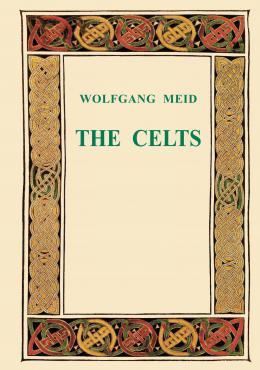The Celts

The Celts
| 9 240 Ft |
| Price |
Innsbrucker Beiträge zur Kulturwissenschaft Neue Folge Band 2
Budapest, Archaeolingua, 2010
Keménytábla | Hardcover
184 oldal, színes és fekete-fehér illusztrációkkal | 184 pages with colored and grayscale images
ISBN 978-3-85124-228-7
Table of Contents // Tartalomjegyzék
Description
„The Celts” – who were they? Did they really exist, or are they, as some archaeologists seem to believe, a mere scientific construct, a fictious entity? The basis of this misapprehension is the fact that it is not possible to diagnose Celticity by archaeological means alone. “Celtic” is, in the first instance, a linguistic concept, and disregarding this linguistic foundation must lead to an impasse, It is the proven relationship of the so-called “Celtic” languages and their derivation from a common ancestor which justifies this scientific concept.
“Celts”, on the other hand, is an ethnic term attested for population groups in western Continental Europe, but which has been extended to include also populations in the British Isles for which this name is not attested. The basis of this terminological extension has been the discovery of the genetic relationship of the languages spoken by all these groups, which consequently have been termed “Celtic” languages, going back to a common prehistoric ancestor language termed “Proto-Celtic”, a distinct branch of the Indo-European language family. Since a language presupposes speakers, these could be called “Celts”. From a linguistic point of view, these “Celts” were real people; today their descendants would be rather called by other names, like Irish or Welsh.
There are many introductions to “the Celts” or to specific matters which may be labelled “Celtic”. Most of them, written by archaeologists and often superbly illustrated, have an archaeological bias concentrating on material culture. The present introduction, written by a linguist and philologist, rather stresses the non-material aspects, relying more on historical sources and, above all, on the authentic testimony of the literary tradition embodied in the extant insular Celtic languages.
A short review of the book is available in Vol 9. of the Studia Celtica Fennica.
| |
|
|
1067 Budapest, Teréz krt. 13. |
|
|
|
|
About us
The Archaeolingua Foundation and Publisher is involved in publishing series and standalone publications in the disciplines of archaeology, linguistics, historic sciences and heritage protection for over 25 years.
Learn more
Publishing
We publish both as standalone editions and as a volume of a professional series.
Learn more
Contact us
Archaeolingua Foundation

